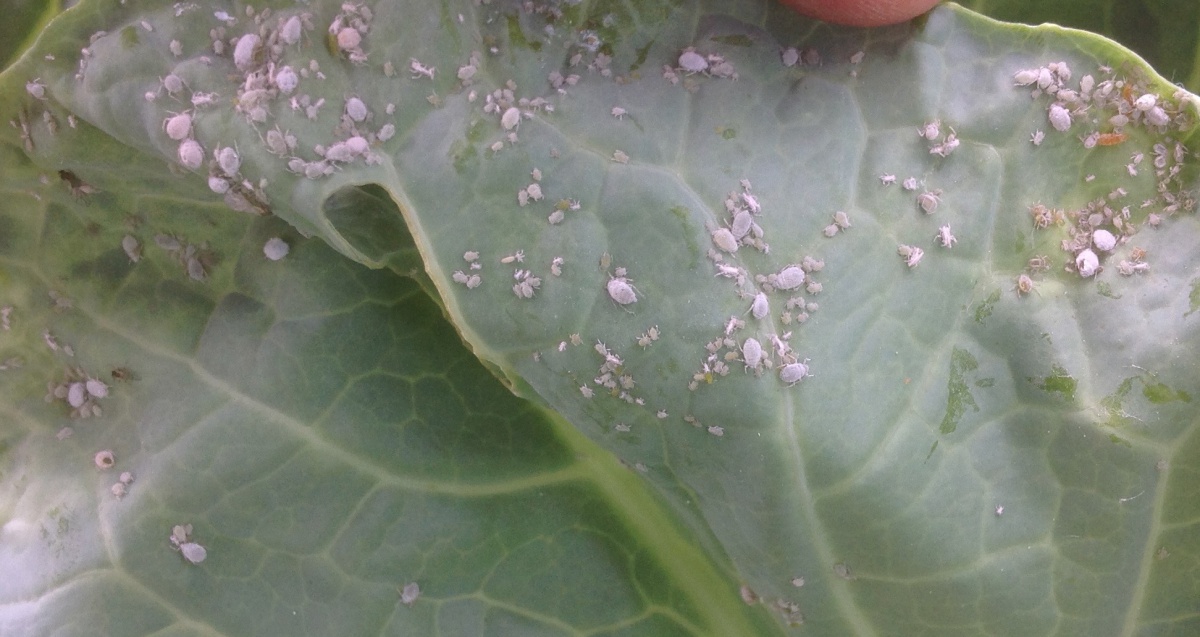Let us know if you have cabbage aphids!

Cabbage aphid, sometimes called ‘gray aphid’ because of its’ waxy gray appearance, is a major pest of brassica crops. It has been particularly problematic in fall crops, especially during recent drought years.
Now is a good time to be scouting regularly for cabbage aphid. It is likely that the first individuals have already appeared in brassica fields. The first ones appear as winged aphids, but quickly give rise to colonies of non-winged aphids. Yellowing of leaves is usually a good indication of the first aphids: inspection of the underside of these leaves often reveals a colony of aphids feeding. The economic threshold for applying a management tactic (e.g. spraying an insecticide) is around 15% of plants with at least one aphid; this is a pretty low level. For more information about this pest, refer to the Brassica crops pest management section within the New England Vegetable Management Guide.

of cabbage aphid feeding. Closer inspection of the underside of the leaf
revealed colonies of cabbage aphid.
In collaboration with UMass, UConn and Cornell, we are studying organic approaches to manage cabbage aphid. Our work has focused on evaluating the efficacy of organically-approved pesticides, and determining whether conservation biocontrol may help with an integrated approach to control this pest. (If you’d like to read more about what we have found, check out this Youtube video of a recent webinar, or read our recent research report: Organic management of cabbage aphid with insecticides on Brussels sprout).
This year, we are looking for sites with cabbage aphid so that we can look for and collect natural predators. If you are located in NH, ME or eastern MA, and if you find cabbage aphid in your brassica crops, please reach out to us by contacting Becky Sideman (becky.sideman@unh.edu).

predatory maggots (they are small and orange, located in the top right
of the photo). Note the characteristic waxy gray coloration of the aphids.